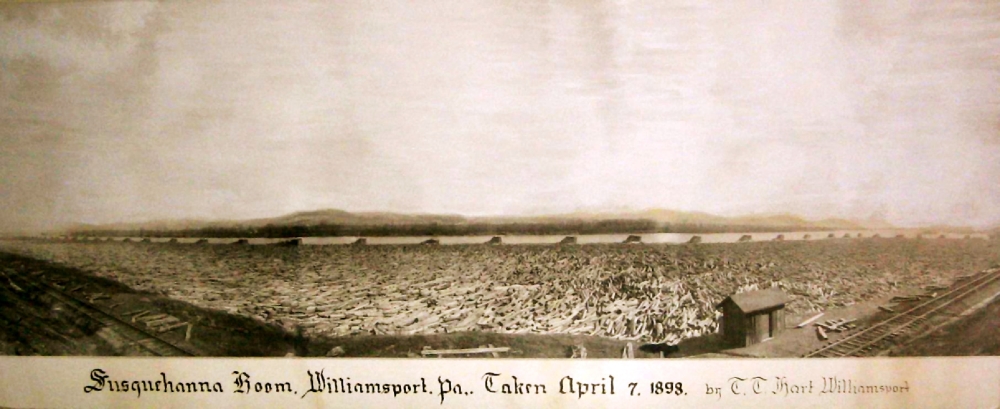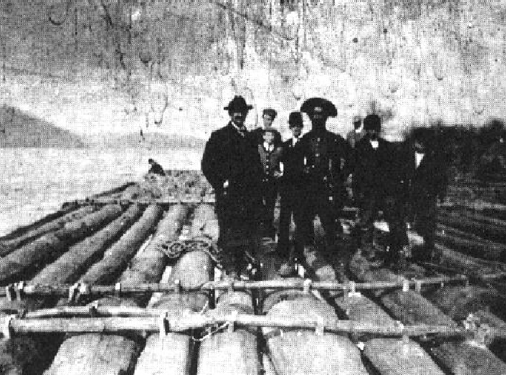RIVERTOWNS during the lumber era
|
During the 2nd half of the 19th century, river men filled the inns and taverns of river towns located along the banks of the Susquehanna. As the millions of logs harvested the previous year were released upstream from “boom towns” like Lock Haven and Williamsport, the raging waters ran thick with mud and men steering fleets of saw logs to the sawmills located along the banks of river towns like Marietta, Columbia and Wrightsville.
Williamsport’s log boom could hold over 300,000,000 board feet of lumber at a time.
By the turn of the century, the Commonwealth's forests had nearly been depleted. The arrival of the last raft in Marietta in the spring of 1911 (see photo above) symbolically marked the end of “the Golden Age” for the river men, who each year eagerly awaited the spring freshets fed by melting snow that caused the river to rise to “rafting stage.” Learn more about life in the river towns during the lumber era at http://susquehannawatertrail.org/sites/default/files/history/13.pdf By the time Pennsylvania folklorist Henry Shoemaker published Mountain Minstrelsy, a compilation of lumber era songs collected from the people who lived and labored in the forested region of Central Pennsylvania, the romance was long gone from the river towns for the old river men who lived beyond rafting’s Golden Age. Shoemaker’s lumber era collection of songs was largely forgotten until 2013, when the central Pennsylvania band, MARAH, recorded their now critically acclaimed album, Mountain Minstrelsy, inspired by songs and ballads from Shoemaker’s book. The video for the song, The Old Riverman’s Regret, was filmed in 2014 at a lumber era tavern in Marietta, on the overlook at Chickies Rock, beneath the Wrightsville bridge, and atop the summit at Highpoint. New York Music Daily voted the song, The Old Riverman’s Regret, among the top 100 songs released in 2014. You can listen to Marah’s song, The The end of the lumber era marked the beginning of another era as traffic shifted from river to rails, and a new romance was born in the rivertowns and taverns on the banks of the Susquehanna.
|


